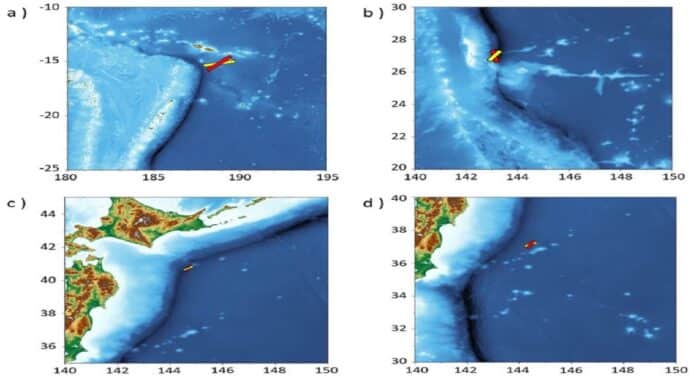A reliable tsunami early warning system is required to prevent human and economic losses from earthquake-caused tsunami disasters.
Tsunami waves are a constant danger to coastal locations, highlighting the importance of a functional tsunami early warning system.
There are other obstacles that early tsunami warning systems must solve, such as the classification of the earthquake type and size, as well as the estimation of fault dynamics and geometry, which require real-time study of the source.
Tsunamis are extremely powerful waves that can destroy coastal infrastructure and kill people. Early warnings for such natural disasters are difficult since the likelihood of a tsunami heavily depends on the characteristics of the underwater earthquake that produces it.
Researchers from the University of California Los Angeles and Cardiff University in the United Kingdom have created an early warning system that combines cutting-edge acoustic technology with artificial Intelligence to identify earthquakes and evaluate possible tsunami risks.
Because underwater earthquakes can cause tsunamis if a sufficient amount of water is moved, determining the type of earthquake is critical for calculating the tsunami risk.
Tectonic events with a significant vertical slip element are more likely to raise or decrease the water column than horizontal slip elements, so identifying the slip type early in the evaluation can reduce false alarms and improve the reliability of the warning systems.
Time is important in these situations, and depending on deep ocean wave buoys to measure sea levels frequently results in insufficient evacuation time. Instead, the researchers advise measuring the earthquake’s acoustic radiation (sound), which transmits information about the tectonic event and travels much faster than tsunami waves.
Bernabe Gomez said, “Thus, knowing the slip type at the early stages of the assessment can reduce false alarms and enhance the reliability of the warning systems through independent cross-validation.”
Hydrophones are underwater microphones that record acoustic waves and continuously track tectonic activity.
Usama Kadri said, “Acoustic radiation travels through the water column much faster than tsunami waves. It carries information about the originating source. Its pressure field can be recorded at distant locations, even thousands of kilometers from the source. The derivation of analytical solutions for the pressure field is a key factor in the real-time analysis.”
The computational model triangulates the earthquake’s source using hydrophones, and AI algorithms classify the slip type and magnitude. It then calculates important factors such as effective length and width, uplift speed, and duration, all of which influence the size of the tsunami.
The scientists used hydrophone data that was readily available to test their model, and they discovered that it almost instantly and successfully represented the earthquake parameters with little processing load. To improve the accuracy of the tsunami categorization, they are enhancing the model by adding more data.
They are contributing to a bigger effort to improve hazard warning systems. A software feature that can increase the safety of offshore rigs and ships is tsunami categorization.
Journal Reference:
- Bernabe Gomez, Usama Kadri, etal.Numerical validation of an effective slender fault source solution for past tsunami scenarios. Physics of Fluids. DOI: 10.1063/5.0144360
